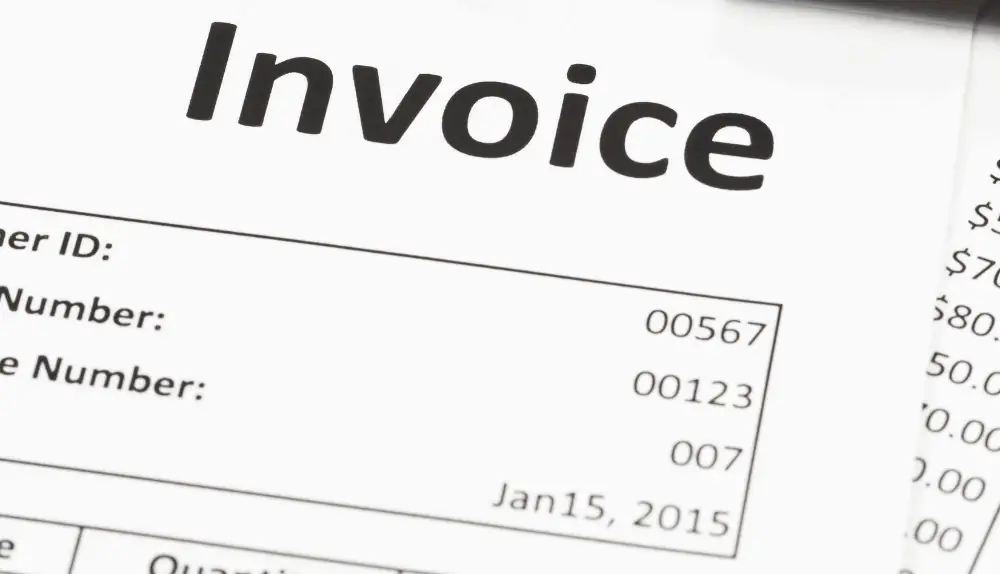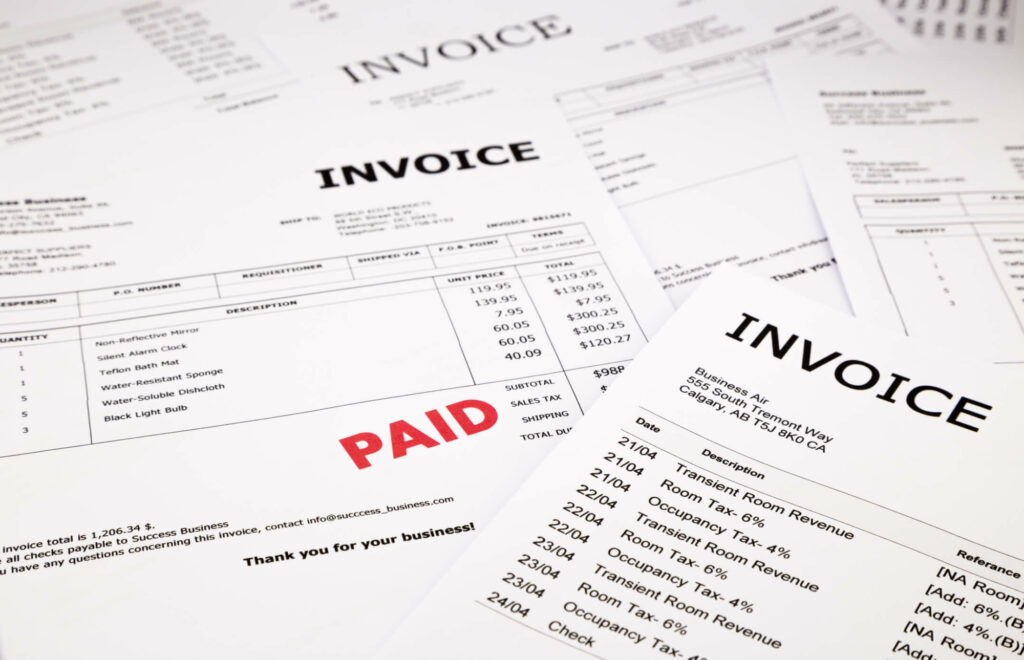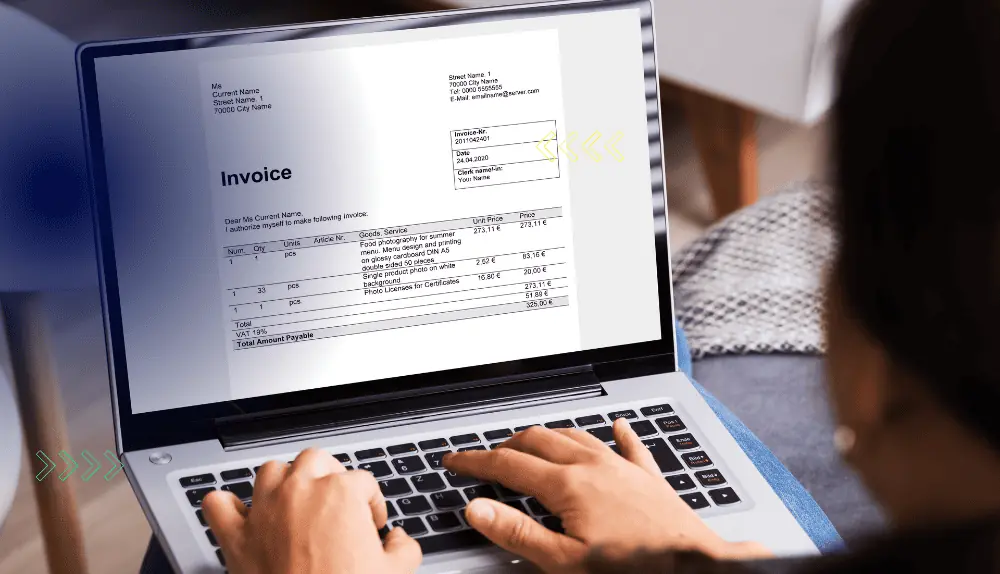Are you tired of dealing with the headache-inducing task of managing invoices? Well, fear no more! Invoice reconciliation is here to save the day and bring peace to your financial operations. A process that ensures every penny you pay or receive is accounted for, preventing financial leaks and discrepancies. It’s like a detective investigating your invoices, uncovering hidden errors, fraudulent charges, and even duplicate invoices that seem to multiply like rabbits.
By delving into the world of invoice reconciliation, you’ll gain the superpower to protect your business from financial mishaps and restore order to your accounting chaos. So, buckle up and get ready to discover the fascinating world of invoice reconciliation – the ultimate superhero of financial management!
What is Invoice Reconciliation?
Invoice reconciliation is the superhero of financial management, swooping in to save businesses from the clutches of financial chaos. It is the process of meticulously comparing and matching invoices with corresponding financial transactions, ensuring accuracy and consistency between the two. Think of it as a vigilant detective, tirelessly scrutinizing every detail to unearth errors, discrepancies, and fraudulent charges.
By harnessing the power of invoice reconciliation, businesses gain control over their financial operations. It allows them to verify the legitimacy of invoices, detect incorrect amounts, identify missing or duplicate invoices, and reconcile any discrepancies between the invoiced amounts and the goods or services received.
This process not only protects businesses from financial losses but also enhances transparency and trust in their transactions. With invoice reconciliation, businesses can rest assured that they pay only for what they have received or sold, reducing the risk of overpayments or underpayments.
So, embrace the power of invoice reconciliation, and let it be your shield against financial mishaps. Say goodbye to confusion and welcome financial integrity and control into your business operations.
How Does the Invoice Reconciliation Process Work?

In the world of financial management, maintaining accuracy and integrity is crucial. This is where invoice reconciliation steps in as a powerful tool to ensure that invoices and corresponding financial transactions align perfectly. Here, we will explore the intricacies of the invoice reconciliation process, breaking it down into manageable steps and shedding light on its significance. So, buckle up as we dive into the world of invoice reconciliation and unveil its inner workings.
Gathering Invoice Data
The first step in the invoice reconciliation process is to gather all relevant invoice data. This includes collecting invoices from suppliers or vendors and invoices issued to customers for goods or services rendered. It is important to ensure that all invoices are captured and organized effectively for further analysis.
Verifying Invoice Accuracy
Once the invoices are collected, the next step is to verify their accuracy. This involves cross-checking the details mentioned on the invoice, such as the invoice number, date, billing address, itemized charges, quantities, and amounts. It is essential to ensure that the invoices are correctly issued and contain all the necessary information.
Matching Invoices with Financial Transactions
The core of the invoice reconciliation process lies in matching invoices with corresponding financial transactions. This requires comparing the invoice details with entries in the accounting system or general ledger. The goal is to ensure that every invoice has a corresponding record of payment or receipt and vice versa.
Identifying Discrepancies
During the matching process, it is common to come across discrepancies or variances between invoices and financial transactions. These may include incorrect amounts, missing invoices, duplicate entries, or discrepancies between the invoiced amounts and the goods or services received. It is crucial to identify and address these discrepancies to maintain financial accuracy.
Investigating Discrepancies
Once discrepancies are identified, it is necessary to investigate and resolve them. This may involve contacting the supplier or vendor to clarify any inconsistencies or discrepancies. Additionally, internal reviews and discussions with relevant departments or personnel may be necessary to uncover the root causes of the discrepancies and rectify them appropriately.
Adjusting Accounting Records
To reconcile the invoices successfully, adjustments may be required in the accounting records. This involves updating the entries in the general ledger or accounting software to reflect the correct amounts, account for missing invoices, or eliminate duplicate entries. Adjustments ensure that the financial records accurately reflect the actual transactions.
Documenting Reconciliation
Throughout the invoice reconciliation process, it is crucial to maintain detailed documentation. This includes keeping records of the reconciled invoices, supporting documents, adjustment entries made, and any communication or resolution regarding discrepancies. Comprehensive documentation serves as an audit trail and provides evidence of financial accuracy.
Reconciliation Reporting
Once the invoice reconciliation process is complete, it is essential to generate reconciliation reports. These reports summarize the findings, including any discrepancies identified, adjustments made, and the overall financial accuracy achieved. Reconciliation reports provide management and stakeholders with a clear overview of the financial integrity of the business.
Ongoing Monitoring and Continuous Improvement
Invoice reconciliation is not a one-time task but an ongoing process. It is crucial to implement a system for continuous monitoring and improvement. This involves regular reviews of the reconciliation process, analyzing trends, identifying areas for enhancement, and implementing measures to prevent future discrepancies.
Invoice reconciliation is a vital component of financial management, ensuring accuracy, transparency, and control over financial transactions. The power of invoice reconciliation lies in its ability to protect businesses from financial losses, enhance trust in transactions, and provide a solid foundation for efficient financial operations. Embracing the invoice reconciliation process enables businesses to navigate the complex world of finance with confidence and precision. By following the steps outlined above, businesses can streamline their invoice reconciliation process, detect discrepancies, and maintain financial integrity.
Benefits of Invoice Reconciliation

Invoice reconciliation may seem like a daunting task, but its benefits far outweigh the effort invested. By incorporating this process into your financial management, you can unlock a range of advantages that contribute to the overall success and stability of your business. Let’s delve into the benefits of invoice reconciliation and discover how it strengthens financial control.
Enhanced Financial Accuracy
The primary benefit of invoice reconciliation is the assurance of financial accuracy. By matching invoices with corresponding financial transactions, businesses can identify and rectify any discrepancies, such as incorrect amounts, missing or duplicate invoices, or discrepancies between the invoice and the goods or services received. This meticulous scrutiny ensures that financial records reflect the true value of transactions, reducing the risk of overpayments, underpayments, or errors that can lead to financial losses.
Prevention of Fraudulent Activities
Invoice reconciliation serves as a powerful tool in detecting and preventing fraudulent activities. By comparing invoices with financial transactions, businesses can identify irregularities, such as invoices from unknown or unauthorized vendors, suspicious billing patterns, or duplicate invoices from the same vendor. Early detection of such fraudulent activities enables prompt action to prevent financial loss and protect the business’s reputation.
Increased Transparency and Trust
Accurate and consistent financial records foster transparency and build trust with stakeholders, including suppliers, vendors, and customers. Transparency in financial transactions not only enhances relationships with business partners but also strengthens the overall reputation and credibility of the organization. By reconciling invoices, businesses demonstrate their commitment to fair and honest financial practices.
Efficient Cash Flow Management
Invoice reconciliation plays a vital role in cash flow management. By verifying invoices and matching them with financial transactions, businesses can accurately track the inflow and outflow of funds. This enables them to have a clear understanding of their financial position and make informed decisions regarding payments, collections, and overall cash flow management. The ability to anticipate and plan for cash flow fluctuations enhances financial stability and supports strategic business growth.
Cost Reduction and Expense Control
Invoice reconciliation contributes to improved financial efficiency and profitability by minimizing unnecessary expenditures. Invoice reconciliation helps businesses identify and address billing errors, overcharges, or incorrect invoicing. By rectifying these discrepancies, businesses can significantly reduce costs and control expenses. Moreover, the process helps eliminate duplicate payments, late payment fees, or penalties incurred due to inaccurate financial records.
Compliance with Regulatory Requirements
Many industries are subject to strict regulatory requirements regarding financial reporting and accuracy. Invoice reconciliation ensures compliance with these regulations by maintaining accurate financial records and supporting documentation. This not only avoids potential penalties and legal consequences but also provides peace of mind to business owners and management.
Streamlined Audit and Financial Reporting
A well-executed invoice reconciliation process simplifies audits and financial reporting. Detailed documentation of reconciled invoices, adjustments made, and supporting evidence serves as a comprehensive audit trail. During audits, this documentation facilitates the verification of financial transactions and supports the accuracy of financial statements. Additionally, reconciliation reports provide a clear overview of financial integrity and help prepare timely and accurate financial reports.
Improved Vendor and Customer Relationships
Invoice reconciliation strengthens relationships with vendors and customers. Accurate and timely payments based on reconciled invoices build trust and credibility with suppliers, leading to favorable terms, discounts, and improved supplier relationships. Similarly, accurate invoicing based on reconciled transactions ensures customer satisfaction, timely payments, and positive customer relationships.
The benefits of invoice reconciliation are manifold and impactful. This process not only ensures financial accuracy and prevents fraudulent activities but also fosters transparency, efficient cash flow management, cost reduction, compliance, and streamlined audits. By implementing a robust invoice reconciliation system, businesses can strengthen financial control, mitigate risks, and pave the way for sustainable growth and success. Embrace invoice reconciliation as a strategic tool and unlock its transformative benefits for your business.
Advantages of Using Invoice Reconciliation Software
Invoice reconciliation can be a complex and time-consuming process, especially for businesses handling a large volume of invoices. Fortunately, the advent of technology has introduced invoice reconciliation software that streamlines and automates this crucial financial task. Leveraging such software offers numerous advantages that empower businesses to enhance their financial efficiency. Let’s explore the key advantages of using invoice reconciliation software.
Time and Resource Savings
Invoice reconciliation software significantly reduces the time and resources required for manual reconciliation. The software automates the matching process by comparing invoice data with financial transactions, eliminating the need for manual data entry and cross-referencing. This saves valuable time for finance teams, enabling them to focus on more strategic tasks and reducing the risk of human errors. Additionally, the software can handle a large volume of invoices efficiently, ensuring timely reconciliation and freeing up resources for other essential business activities.
Improved Accuracy and Error Detection
Manual invoice reconciliation is prone to human errors and oversights. Invoice reconciliation software enhances accuracy by leveraging automation and sophisticated algorithms. It meticulously compares and matches invoice details with financial transactions, detecting discrepancies, incorrect amounts, missing or duplicate invoices, and other potential errors. The software can identify inconsistencies that may be challenging to spot manually, minimizing the risk of financial losses due to billing errors or fraudulent activities.
Enhanced Visibility and Transparency
Invoice reconciliation software provides businesses with real-time visibility into their financial transactions and reconciliation status. It offers comprehensive dashboards and reports presenting reconciled and unreconciled invoices, outstanding payments, and overall financial position. This visibility enables management and stakeholders to gain insights into the financial health of the organization, identify potential bottlenecks, and make informed decisions. Furthermore, the transparency provided by the software fosters trust with suppliers, vendors, and customers, enhancing business relationships.
Customization and Scalability
Invoice reconciliation software offers customization options to tailor the reconciliation process according to specific business requirements. The software can be configured to accommodate various invoice formats, currencies, and payment methods, ensuring compatibility with diverse business operations. Additionally, as businesses grow and evolve, the software can scale to handle increased invoice volumes and accommodate additional functionalities. This scalability allows businesses to adapt the software to their changing needs, ensuring long-term usability and value.
Integration with Accounting Systems
Integration with accounting systems is a key advantage of invoice reconciliation software. The software seamlessly integrates with existing accounting software, such as ERP (Enterprise Resource Planning) systems, enabling smooth data exchange and synchronization. This integration eliminates the need for manual data entry or duplicate record-keeping, ensuring data consistency and reducing the risk of errors. The synchronized data also facilitates streamlined financial reporting and audit processes, as reconciled invoices and financial transactions can be easily accessed and validated.
Compliance and Audit Trail
Invoice reconciliation software aids businesses in meeting regulatory compliance requirements. The software maintains comprehensive audit trails, documenting the reconciled invoices, adjustments made, and any communication or resolution regarding discrepancies. These audit trails serve as evidence of financial accuracy during audits and ensure compliance with regulatory standards. The software also generates reconciliation reports that provide a clear overview of the reconciliation process, supporting financial reporting requirements.
Workflow Automation and Collaboration
Invoice reconciliation software often includes workflow automation capabilities, enabling businesses to streamline their reconciliation processes. The software automates tasks such as invoice matching, exception handling, and approval workflows, reducing manual intervention and improving process efficiency. Additionally, the software facilitates collaboration among different stakeholders involved in the reconciliation process. It allows multiple users to access and update the reconciliation data simultaneously, enhancing communication and collaboration between finance teams, suppliers, and other relevant parties.
The advantages of using invoice reconciliation software are significant for businesses aiming to enhance their financial efficiency. The software saves time and resources, improves accuracy and error detection, enhances visibility and transparency, offers customization and scalability, integrates with accounting systems, ensures compliance, and enables workflow automation and collaboration. By embracing invoice reconciliation software, businesses can streamline their financial operations, reduce risks, and drive productivity, ultimately contributing to their overall success and growth.
Final Words
In conclusion, invoice reconciliation is a critical process that ensures financial accuracy, prevents fraud, and fosters transparency in business transactions. By implementing a robust invoice reconciliation system, businesses can experience many benefits. It enhances financial control, mitigates risks, and contributes to cost reduction and expense control.
Additionally, invoice reconciliation supports compliance with regulatory requirements, streamlines audits, and financial reporting, and strengthens vendor and customer relationships. Moreover, the advent of invoice reconciliation software further amplifies these advantages by saving time, improving accuracy, providing real-time visibility, and enabling customization and scalability. By embracing both the process and the technology, businesses can empower their financial efficiency, make informed decisions, and pave the way for sustainable growth.
Invoice reconciliation, with the assistance of innovative software solutions, equips businesses with the tools they need to navigate the complex financial management landscape and achieve long-term success.
Frequently Asked Questions (FAQs)
Why is invoice reconciliation important?
Invoice reconciliation is crucial for businesses as it helps maintain financial accuracy, prevent fraudulent activities, enhance transparency, control expenses, comply with regulatory requirements, and strengthen vendor and customer relationships.
How often should invoice reconciliation be done?
The frequency of invoice reconciliation depends on the volume of invoices and the nature of the business. Generally, it is recommended to reconcile invoices regularly, such as on a weekly or monthly basis, to ensure timely detection and resolution of discrepancies.
Can invoice reconciliation be done manually?
Yes, invoice reconciliation can be done manually, but it can be time-consuming, prone to errors, and challenging to handle large volumes of invoices. Utilizing invoice reconciliation software can significantly streamline the process and improve accuracy.
What are the benefits of using invoice reconciliation software?
Invoice reconciliation software offers advantages such as time and resource savings, improved accuracy, enhanced visibility and transparency, customization and scalability, integration with accounting systems, compliance support, workflow automation, and collaboration.
How does invoice reconciliation software work?
Invoice reconciliation software automates the process of matching invoices with financial transactions. It uses algorithms to compare invoice details, detect discrepancies, and generate reconciliation reports. The software can also integrate with accounting systems, streamline workflows, and provide real-time visibility into reconciliation status.
Is invoice reconciliation only for large businesses?
No, invoice reconciliation is beneficial for businesses of all sizes. While large businesses may have higher invoice volumes, smaller businesses can also benefit from maintaining financial accuracy, controlling expenses, and ensuring transparency in their financial transactions.

